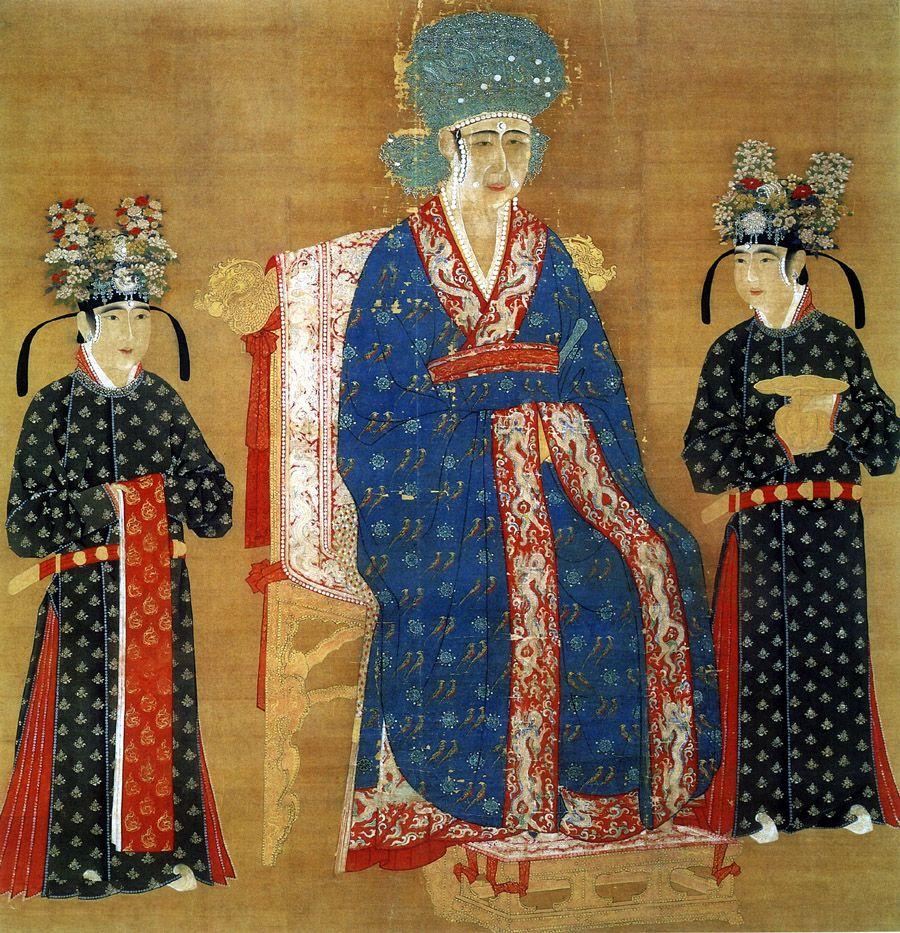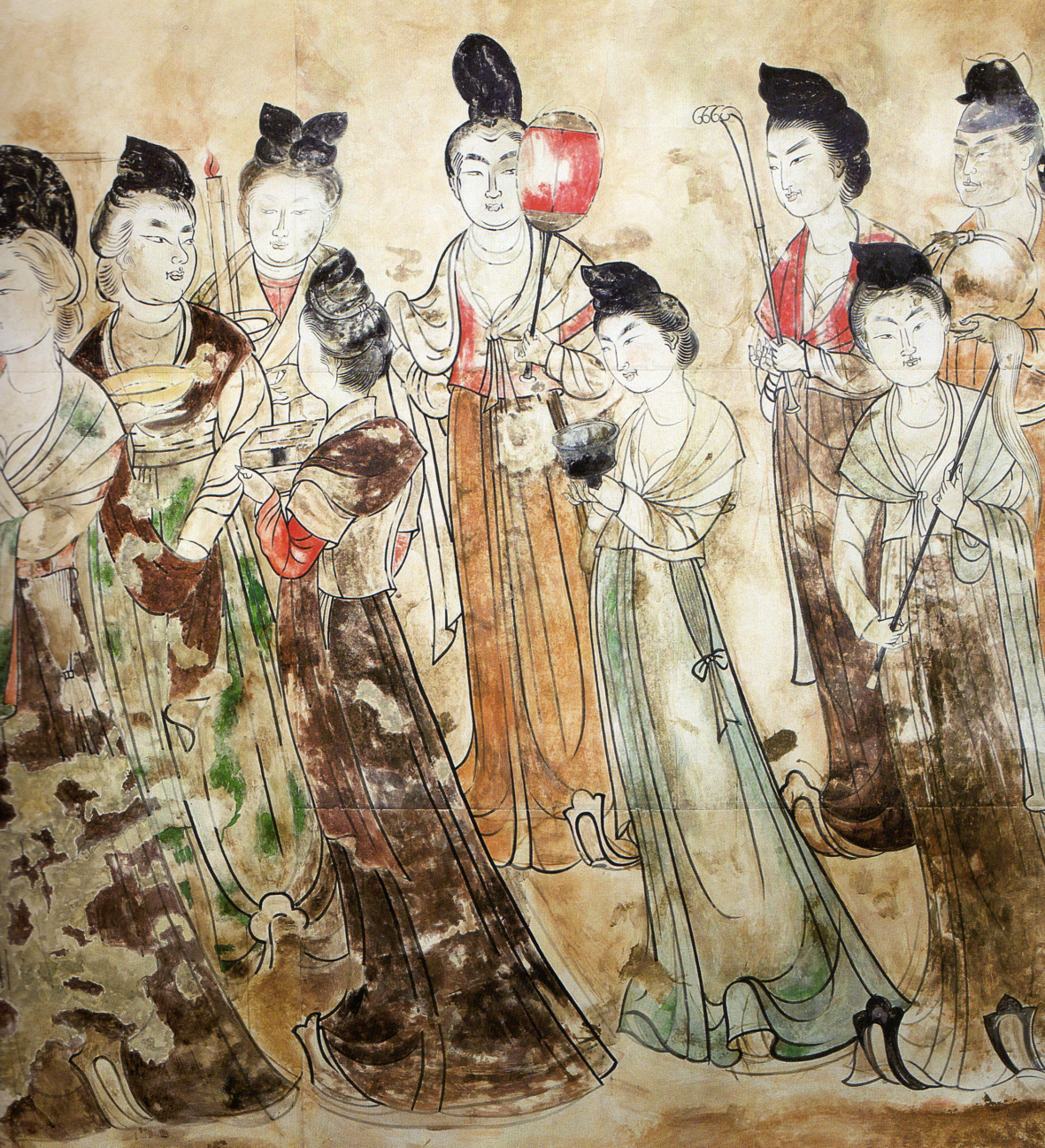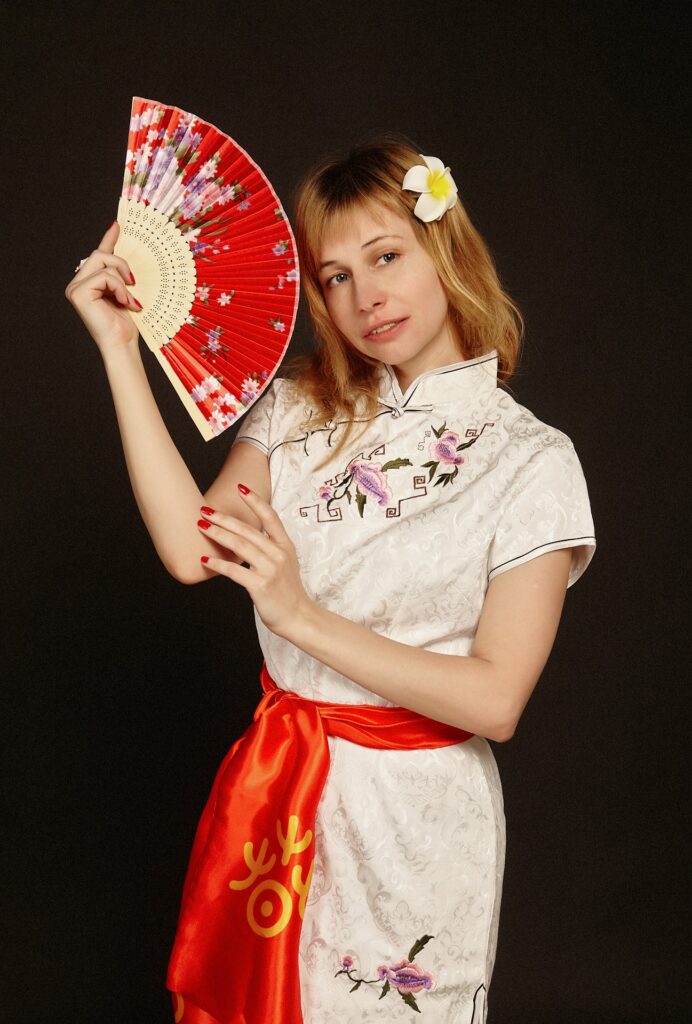Chinese national dress, like nothing else, most fully reflects the centuries-old history of the country. At first glance, it seems that the styles, cut do not change over time. But in fact, there were many options for cutting, fabrics, ornaments.
For example, they are different for each region. Moreover, from era to era, standards, rules for dressing clothes changed, and they were regulated by the imperial dynasty. However, like any other rules.
Yes, despite dozens of types of clothing, there were certain standards – for commoners, officials, warriors, scientists. The history of Chinese clothing is as fascinating and diverse as the history of the country. Therefore, it is worth studying it in more detail.
Content
- Chinese national dress: the history of its appearance
- Traditional Chinese clothing for men
- Chinese national dress: from era to era
- Chinese National Clothing: Qin Dynasty – Song Dynasty
- Chinese National Clothing: Yuan Dynasty – Qing Dynasty
- Traditional Chinese clothes for women
- Chinese national dress: the Tang era – the rise of China
- Chinese national dress: the Han era – the development of China
- Shang era national costume
- National costume of the Zhou era 周朝
- National costume of the Qin era 清朝
- Chinese national dress of the XX century
- Summarize
Chinese national dress: the history of its appearance

Image by: Zhongguo lidai huihua: Gugong bowuyuan canghua ji, vol. 1 (Beijing: Renmin meishu chubanshe, 1978), p. 89.
The history of China we know begins in the Bronze Age. This is the time of the first imperial dynasty Xia 夏朝, which is considered only a legend by some scholars and researchers. Of course, the clothes existed before, but few people know what they were. We only know that the first fabrics appeared during the second dynasty.
Reference:
Xia Dynasty 夏朝 – 2070 BC e. – 1600 BC e.
It is known that the type of fabric, cut and standard set of clothing items depended on the region of residence. After all, China is a large territory, with a big difference in climate from region to region.
For example, in the northeast, northwest of China, in Inner Mongolia, the climate is harsh. Therefore, people there wore long robes made of thick fabrics. Clothing made of fish skin was widespread (in coastal regions or in areas near large rivers, lakes, where fishing flourished). Also, clothes were sewn from bast, fur. In the central and southern regions it is warmer, so robes made of light hemp, hemp or cotton fabrics were common here. Silk was available only to the nobility.
As for the decor, it was influenced by the religious ideas of the nationality and its traditions. For example, for the women’s clothing of the Jingpo 景颇族 peoples, adornments made of blown silver are characteristic, which imitate dragon scales.
The origins of this are in the legend that the female dragon was the progenitor of the nation. In the ornaments and patterns of the Miao people, it is easy to guess mountain roads – this is how the legends about the global migration of the Miao ancestors were passed from generation to generation. The development of Chinese clothing is inextricably linked with the development, history of the country, its individual provinces and nationalities. But, as mentioned above, there have always been certain standards and traditions of vestments.
Traditional Chinese clothing for men

Image by: Official Song dynasty portrait painting of Empress Cao, wife of Emperor Renzong of Song
Men’s Chinese national dress consists of several items:
- Bathrobe. It covered the whole figure, was ankle-length. It is a type of outerwear with one-piece sleeves. The floors of the robe have a different configuration (depending on the era, status of the owner). But in all robes (as well as in other clothes with a smell), the upper hem was left. The upper right floor was only for burial kits or eunuchs.
- Jacket. It was worn with a skirt or over a robe. The jacket has a large wrap and a fastener under the right hand. Textile buttons were used – made of a cord tied in a “monkey fist” knot. Copper buttons were also used. If the jacket was without buttons, strings were used.
- Skirt or shan. A kind of wraparound skirt, which was fastened at the waist with strings. Various necessary items were hung on the belt – a knife, writing utensils, a signet, etc.
- Woven belt or wide band that wraps around the waist.
- Pants (xiaoiku 下 衣裤) – a simple wide cut, without a fastener, with a low step. For noble people, pants were considered an indecent part of the toilet, therefore, they had to be completely hidden by a zapashny skirt or dressing gown.
- Headdress. It could be a hat made of straw, cane or bark, conical in shape. Lightweight silk hats were also made. For solemn occasions, there were hats resembling the roofs of pagodas (they are the ones that appear in historical films).
- Also, traditional Chinese clothing for men involves wearing headbands, turbans, and felt caps. In any case, the adult man’s head had to be covered. The exception is monks.
As for the shoes, they were also varied. Wooden sandals with fabric or leather straps, boots made of leather or fabric, straw or woven shoes – each region and period has its own footwear.
Chinese national dress: from era to era
Chinese National Clothing: Qin Dynasty – Song Dynasty

Image by: CC BY-SA 3.0
The eras in the history of China are tied to the ruling dynasties. There were 13 of them in total, and each left its mark not only in the economy, politics, but also in culture.
If we talk about a uniform style of costumes, then it appeared during the Qin dynasty 秦朝 (the fourth dynasty, which replaced Zhou 周朝). Since the change of power took place by military means, the efforts of the new emperor were aimed at defeating the entire legacy of the previous rulers. This even applied to colors – if the Zhou preferred the red color of the fire, the Qin chose the opposite – blue, the color of water that extinguished the fire.
The next dynasty was the Han 汉朝 – it left one of the deepest traces in culture. The Han was replaced by the Jin Dynasty 晋朝, which again returned to red, but it was worn by the rulers. And in everyday life, the purple hue prevailed. Ordinary citizens wore white.
Then the Tang Dynasty 唐朝 reigned. The period of her reign is known as the era of prosperity. The Tang was replaced by the Song dynasty 宋朝. During her reign, clothes were divided into three types:
- For the empress, noble concubines and wives of government officials.
- For ordinary people, formal style.
- Casual.
During this era, even commoners dressed tastefully, and the clothes of high-ranking officials and members of the dynasty were extremely luxurious. It was then that hairstyles became the most intricate, and fabrics – graceful.
Reference:
Qin 秦朝 – 246-207 BC e.
Han 汉朝 – 206 BC. – 220 BC AD
Jin 晋朝 – 265-420 BC
Tang Dynasty 唐朝 – 618-907 Song Dynasty 宋朝 – 960-1127
Chinese National Clothing: Yuan Dynasty – Qing Dynasty
The next period that left its mark on Chinese fashion was the Yuan Dynasty 元朝. Unlike the previous ones, it was Mongolian. The Mongols introduced the long sleeveless leather robe, which was also worn by all classes. But the clothes of women aristocrats were different. Outerwear was leather and fur. Dresses were long, with a train, wide sleeves and narrow cuffs, they were sewn from expensive fabric – silk, brocade.
Then came the time of the Ming Dynasty 明朝. With her, pleated skirts made of multi-colored satin, with gold embroidery, entered women’s fashion. But there were also skirts made from a single piece of satin. Also, narrow sleeves and outerwear with three collars came into fashion. Women at that time wore a particularly beautiful type of cape, which was called the “cloudy pink cape.”
Men’s clothing consisted of pants, a jacket with a round collar and square sleeves, a hanging black belt, a black cape or a wide robe. The officials wore long satin robes with long, wide sleeves that fell below the arms.
The last imperial dynasty – Qing 清朝 – brought the Manchu style to fashion. A short narrow sleeve, a strictly straight cut, a large collar – all these are the characteristic features of this style. Like the embellishment clasps on the right side, the outer garment is abundantly embroidered.
Women’s clothing consisted of a long robe with two slits and a high collar, a short shirt and pants underneath. All this was decorated with embroidery, inlay. It should be borne in mind that in each era, clothing was divided into everyday and ceremonial. And not only among aristocrats, but also among the middle class, peasants, the military and other classes.
Reference:
Yuan 元朝 – 1280-1367
Min 明朝 – 1368-1644
Qing Dynasty 清朝 – 1644-1911
Traditional Chinese clothes for women
In all eras, the cut and “composition” of women’s clothing was similar to that of men. That is, women wore robes, sweaters. There was a skirt under the robe. They also wore wide trousers hidden under a skirt. What distinguished women’s suits is the beauty of the finish. It was embroidery – flowers were embroidered, and each flower personified one of the seasons. Chrysanthemums meant autumn, daffodil and plum flowers meant winter, peony meant spring, and lotus meant summer.
They also embroidered butterflies, mandarin ducks, which personified family happiness. Subject embroidery was also widespread – it could be illustrations for famous works, historical or everyday scenes. As a rule, all patterns were enclosed in circles tu-an 图案.
Naturally, the clothes of aristocrats differed from the clothes of commoners, but in color, luxury of decoration, cost of fabrics. The cut and general principles remained the same. Also, the traditional clothing of the Chinese women of the aristocratic estates, implied the absence of outer clothing, since it was assumed that such women did not leave the house.
And if you remember the “lotus leg”, this is understandable. And the shoes of the aristocrats did not imply a comfortable walk. In addition, the image of the aristocrat was complemented by a complex hairstyle with a mass of jewelry, long nails, on which silver cases were even put on – such can be seen today, in the Chinese dance “Thousand Hands”, in some theatrical performances.
Chinese national dress: the Tang era – the rise of China

Image by: – Tang Li Xian Mu Bi Hua (1974)
The period of the Tang Dynasty 唐朝 is considered the “Golden Age”. Economic prosperity, the development of science, arts, technology, peace between the lands – all this influenced the style of clothing. He became more graceful, noble, refined. Thin bright fabrics were held in high esteem.
Women’s clothing consisted of either a short-sleeved blouse and skirt, or a long-sleeved shirt, skirt and cape. The hair was gathered in a high bun that made it easier to wear a straw or bamboo hat. Shoes were woven from straw and hemp or sewn from silk and decorated with ornaments.
Under the Tang Dynasty, wide men’s belts came into use, on which they wore various objects and ornaments, but this was strictly regulated by the rules. For example, an official of the first (lowest) rank could carry a sword and knife, an official of the seventh rank could wear a silver belt, and a commoner was allowed to have only a small knife made of iron or bronze on his belt. It was convenient – it was enough to look at the belt to understand who was in front of you. Violation of the rules was punishable.
Chinese national dress: the Han era – the development of China
The features of the style of the Han era 汉代 include:
- Red clothing;
- Cicada-like hats;
- Angle cutouts;
- Square sleeves;
- Jade pendants as jewelry;
- Red shoes.
The main model of clothing was an unlined outer dress. At the same time, the emperor’s vestments were black, and the priests, during the rituals, put on vestments with a red border.
In the Han era, red played a major role, it was considered the color of reverence and showed the “dignity of fire” of this dynasty. But in the second period of the dynasty, he was joined by a white one – on the lining of robes for ceremonies.
Also, the color of the priests’ clothes depended on the season – in early spring gray and green prevailed, in early summer – red, in autumn – yellow, in winter – black.
If we talk about the cut and other features of the style for ordinary residents, then much was inherited from the previous dynasty, Qin. For example, a variety of hats, which differed in shape, each profession and status had its own hat. Women wore long skirts, short sweaters and decorative belts. The men wore leather pants with a short fabric skirt and short jacket.
Shang 商朝 era national costume
Much attention was paid to the correspondence of the materials of the costumes to the class of the people who wore them. At that time, craftsmen already knew how to make the finest silk and brocade, apply complex patterns to fabrics and weave them out of them, etc. For the common people, it was typical to wear clothes made of unpainted hemp, thick wool and coarse linen, and for the townspeople and the nobility – from silk, fine hemp, leather and dressed skins.
The basis of the suit were shirts with a collar, a wrap and narrow sleeves. The edges of the collar and cuffs were decorated with braid, the waist was pulled together by a wide belt with a leather sheath. The bottom of the suit consisted of a chan skirt – a long and narrow skirt to the heels. In this era, there was already a division of clothing into upper and lower, wearing trousers was allowed.
Particular attention was paid to jewelry and headdresses indicating the status of the owner. Hairpins, necklaces, earrings and ornaments for hands were made of bone, metals, jade, and precious stones. Headdresses were both small round and tall, complex, adorned with jewels (among slave owners and aristocrats).
National costume of the Zhou era 周朝
The rules of dressing etiquette were tightened: the attire had to comply with all accepted norms, being a symbol of position in society. The main differences were the width of the sleeves, the length of the skirt and the decoration of the fabric. Differences in materials and colors also persisted. Depending on the rank, people could wear clothes of a certain color:
- Imperial Family – Yellow
- Warriors – white and red;
- Young warriors – blue;
- The dignitaries are brown.
The main wardrobe items were short sweaters with long skirts to the floor, starting above the chest (some types with a fitted canvas belt), long sweaters to the waist with wide or narrow skirts. Top jackets could be of different cuts, depending on the status and position of the owner.
Also known are long shirts or T-shirts with long narrow sleeves called “Pao” 袍. For protection from the cold, they wore fur coats made of goat, monkey, dog, sable or fox fur, as well as embroidered silk robes. On the basis of pao 袍, wide dresses were created, hiding the figure and leaving only the palms, head and toes of shoes visible. Modern Chinese tight dresses with side cutouts, open arms and embellishments are direct descendants of these particular clothing models.
National costume of the Qin era 清朝
Thanks to the reforms carried out, a significant number of traditions in the wearing of clothes were abolished, which led to a reduction in worn outfits to everyday and festive.
Shoulder types of clothes were swing – jackets, robes, single-breasted or double-breasted. A distinctive feature was the cuts on the hem: on the sides, front and back, or on all sides at once.
Manchurian costumes of this era were distinguished by details: the absence of folds, the presence of cuffs, and asymmetric cut with lace buttons. Separately, we can note hats with a pointed top, ball-tops, and shoes with upward-curved noses. For women, the difference in dresses was the creation of a narrower silhouette with fitting and gathering at the bottom of the garment. Sleeveless jackets are widespread.
Chinese national dress of the XX century
At the beginning of the twentieth century, Chinese jackets and trousers gained the greatest popularity. This is a completely natural transition from the classic national dress of trousers and shirts (all the same single-breasted or double-breasted, with a wrap and a classic fastener). Women’s dress, meanwhile, took on an increasingly modern look by shortening the sleeves and hem length, as well as changing the silhouette. All garments continued to be sewn from traditional materials, using national patterns and colors. And only closer to the middle of the twentieth century, the inhabitants of China began to adopt the fashion of the Europeans.
However, celebrations and holidays are still held in national traditional costumes as a tribute to the culture and history of the country.
Summarize
Chinese history goes back over 5000 years. During this time, 13 ruling dynasties were replaced, each of which contributed to the development of the country. Different periods were filled with prosperity and decline, development and internecine wars, land unification and disintegration. Each era has left its mark on culture, including fashion. But the greatest requirements were imposed on ceremonial attire. This is understandable – in China, color, shape, decoration and even accessories have always been deeply symbolic, reflecting not only tastes, but also worldview, religious views, even the political situation.


